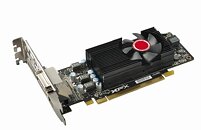
Intel Arc Alchemist Xe-HPG Graphics Card with 512 EUs Outperforms NVIDIA GeForce RTX 3070 Ti
Intel's Arc Alchemist discrete lineup of graphics cards is scheduled for launch this quarter. We are getting some performance benchmarks of the DG2-512EU silicon, representing the top-end Xe-HPG configuration. Thanks to a discovery of a famous hardware leaker TUM_APISAK, we have a measurement performed in the SiSoftware database that shows Intel's Arc Alchemist GPU with 4096 cores and, according to the report from the benchmark, just 12.8 GB of GDDR6 VRAM. This is just an error on the report, as this GPU SKU should be coupled with 16 GB of GDDR6 VRAM. The card was reportedly running at 2.1 GHz frequency. However, we don't know if this represents base or boost speeds.
When it comes to actual performance, the DG2-512EU GPU managed to score 9017.52 Mpix/s, while something like NVIDIA GeForce RTX 3070 Ti managed to get 8369.51 Mpix/s in the same test group. Comparing these two cards in floating-point operations, Intel has an advantage in half-float, double-float, and quad-float tests, while NVIDIA manages to hold the single-float crown. This represents a 7% advantage for Intel's GPU, meaning that Arc Alchemist has the potential for standing up against NVIDIA's offerings.
When it comes to actual performance, the DG2-512EU GPU managed to score 9017.52 Mpix/s, while something like NVIDIA GeForce RTX 3070 Ti managed to get 8369.51 Mpix/s in the same test group. Comparing these two cards in floating-point operations, Intel has an advantage in half-float, double-float, and quad-float tests, while NVIDIA manages to hold the single-float crown. This represents a 7% advantage for Intel's GPU, meaning that Arc Alchemist has the potential for standing up against NVIDIA's offerings.






























































